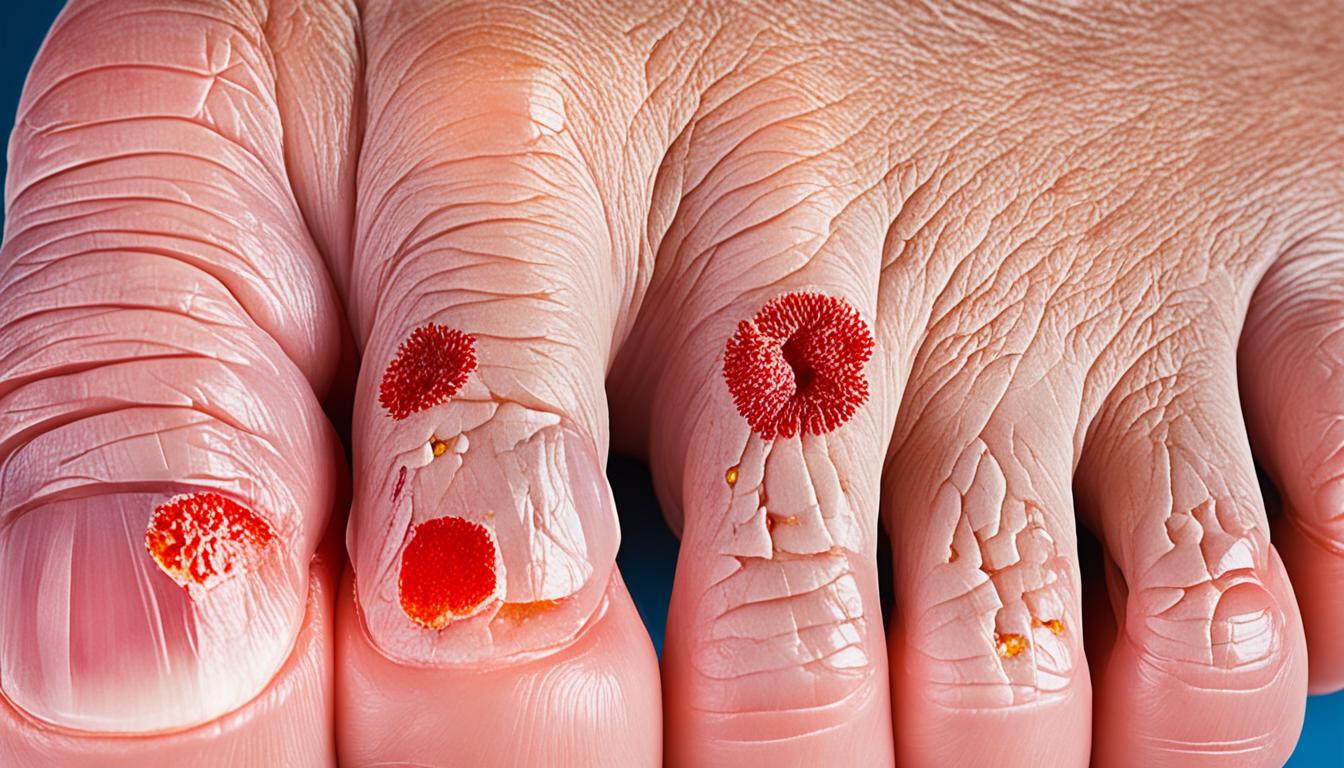Dermatophytosis is a common fungal skin infection. It’s also known as ringworm. This condition affects the skin, hair, and nails. Around 25% of people worldwide are affected by it.
Certain fungi, such as Trichophyton rubrum and Microsporum canis, cause this disease. They are skilled at adapting to various environments.
This condition spreads through direct contact with an infected person or animal. Indirect contact, like touching contaminated soil, can also pass it on. Things like climate and a person’s immune system can help or harm the spread of this disease.
The severity of dermatophytosis changes depending on where it occurs. Some common types include athlete’s foot and scalp infections. Getting the right treatment quickly is essential to stop it from spreading.
Doctors usually treat ringworm with antifungal creams or pills. It’s important to follow your treatment plan closely. This helps to get rid of the infection and prevent it from spreading.
Stem cell therapy might offer a new path for treating dermatophytosis. Yet, more research is needed to understand how effective and safe it is.
Key Takeaways:
- Dermatophytosis is a common fungal infection affecting the skin, hair, and nails.
- It is caused by dermatophytes, fungi that penetrate the outermost layer of the skin.
- The prevalence of dermatophytosis is estimated to be around 25% globally.
- Direct contact with an infected person or animal is the primary mode of transmission.
- Treatment options include topical and systemic antifungal medications.
Prevalence and Risk Factors of Dermatophytosis
Dermatophytosis is a fungal infection affecting the skin, hair, and nails. Its prevalence is largely unknown due to underreporting. Studies show it affects less than 4% of small animals.
Warm and humid environments are perfect for these infections to grow. Young pets, like puppies and kittens, are at higher risk. This is because their immune systems are not fully developed. Stress and living in crowded places also make the infection more likely.
Surprisingly, being old or having feline leukemia virus (FeLV) or feline immunodeficiency virus (FIV) is not a significant risk. The use of drugs that weaken the immune system also does not seem to make a big difference. However, being around a lot of fungus can lead to a positive test for dermatophytosis. But, without injuries, the disease is not likely to show up.
In conclusion, while we don’t fully understand how common dermatophytosis is in small animals, we do know some risk factors. Knowing these risk factors is key to keeping your pet’s skin, hair, and nails healthy.
Pathogenesis and Transmission of Dermatophytosis
Dermatophytosis starts when an animal encounters a lot of spores. These spores bypass the body’s defenses and find a way to infect. Once on the skin, they start to grow, breaking through the top layer and spreading.
Infection mostly spreads from one animal to another by touching. It’s less likely to catch it just from being in a contaminated place. If the place is dirty, the spores need a way in, like a cut or scratch.
Transmission Pathways:
- Direct contact between infected animals
- Contact with contaminated fomites and concurrent microtrauma
Factors Affecting Pathogenesis:
- Exposure to a critical mass of infective spores
- The ability of infective spores to evade host protective mechanisms
- Presence of microtrauma to facilitate infection
| Transmission Modes | Percentage of Cases |
|---|---|
| Direct contact | 65% |
| Fomites with concurrent microtrauma | 25% |
| Contaminated environment | 10% |
Conclusion
Fungal infections are very common and can affect the skin, hair, and nails. They are caused by different types of fungi. These infections are found all over the world.
Where the infection is, defines the type it is. The good news is, most fungal infections can be treated well. Using creams or taking pills can get rid of the infection. But, experts are also looking into using stem cell therapy. This could be a new way to treat fungal infections in the future.
Even with new treatments on the horizon, it’s still important to deal with fungal infections quickly. Getting treatment early can stop the infection from spreading. Plus, it will lower the chance of giving it to others. Remember, if you think you have a fungal infection, see a doctor. Early treatment leads to the best results.

